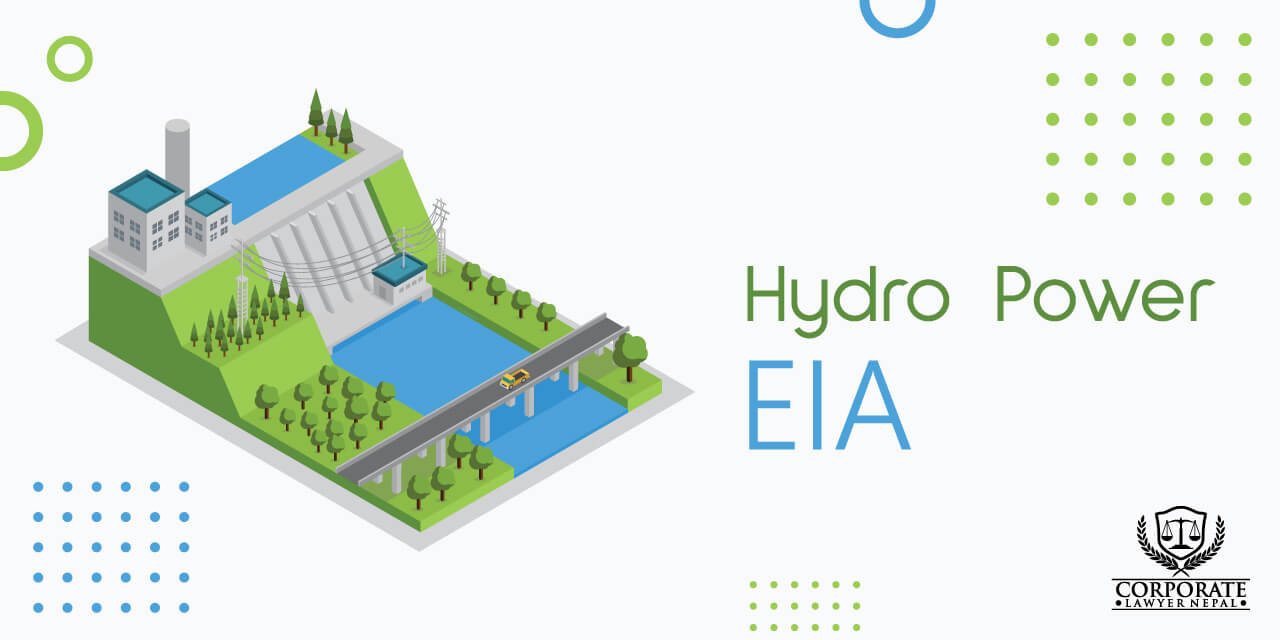Corporate Lawyer Nepal is a one-of-a-kind multi-faceted law firm in Nepal. We work with a group of legal experts. We represent clients in court and provide consulting services related to hydropower EIA.
1. What is the Environmental Impact Assessment (EIA)?
An environmental impact assessment (EIA) is a study of the prospective potential effect of a suggested project on the environment, taking into account natural, social, and economic factors. They are used for a variety of projects, including infrastructure development and hydropower projects. An Environmental Impact Assessment (EIA) is a comprehensive process that identifies, evaluates, and mitigates the environmental impact of the proposed project prior to making key decisions and commitments.
2. How Corporate Lawyer Nepal assists in Hydropower EIA?
Corporate Lawyer Nepal provides legal consulting services for hydropower projects. We offer legal services in two scenarios.
1. Legal Counsel during the Pre-Construction Phase
Pre-construction activities include pre-engineering research to determine the viability of constructing a hydropower infrastructure within the pre-identified locations. Hydrogeological studies, geotechnical site surveys, site preparation, seismological inquiries, identification of possible quarries, development of new roadways, preliminary site investigations, stakeholder analysis actions, obtaining authorizations and building permit are all part of the activities. In this manner, the Corporate Lawyer Nepal have removed legal impediments during the Pre-construction Phase. The first phase is vital in determining whether or not a project can move forward to the construction phase. An environmental impact assessment (EIA) is a risk assessment that consists of several steps that Corporate Lawyer Nepal has been assisting with.
2. During the Construction Phase, Legal Counsel
As part of the construction activities, the major components of the hydropower facility are being built. A diversion structure, spillways or reservoir, water consumption structure, headwork such as piping system and passageways, powerhouse, sewer or underpass, power station or panel board, and transmission lines are illustrations of such elements and access roads. The construction phase is the most contentious. Various lawsuits are filed in court. At the local level, there is a lot of disagreement. In such cases, Corporate Lawyer Nepal has provided legal solutions. Before the hydropower plant can begin operations, the construction program could take years (e.g., three to five years on average). As a result, we’ve been serving as a watchdog for hydropower projects that have been in the works for decades, as well as providing legal consulting services to meet their requirements.
3. The following procedures are involved in the EIA for a hydropower project.
Pre-construction, construction, commissioning, operation, and decommissioning are the five stages of a hydropower project. The expiration of the license period after development and use is referred to as decommissioning. In each of the preceding five cycles, a study should be conducted to determine the potential physical and ecological impacts.
4. The EIA for the hydropower project is carried out in the manner specified.
- Project authentication / vetting (pre-feasibility);
- Scope verification (feasibility);
- EIA study;
- EIA report submission
- Review of EIA Report
4. Environmental protection measures are being put into action.
5. Observing, Assessment, and Accounting
A variety of stakeholders are involved in hydropower. Stakeholders are individuals, groups, or institutions who are directly or indirectly affected by a project, as well as those who may have interests in the project or the ability to influence its outcome, either directly or indirectly.
6. An EIA study is conducted to better understand the potential impacts on various stakeholders.
7. Protect the interest of stakeholders.
Protect stakeholder interests: Corporate Lawyer Nepal serves as a legal advisor to a number of Nepalese businesses. Corporate Lawyer Nepal identifies stakeholders associated with hydropower and assesses the problems associated with it in order to reduce its impact. It serves as a catalyst for all stakeholders to identify and actively participate in reducing project risks such as protests and conflict. Different requirements, constraints, flaws, and perspectives about a project may exist within communities based on gender, social class, ethnic origin, age, educational achievement, communication skills, social standing, and other cultural influences. Stakeholder identification should be used as a tool to understand and realize these discrepancies, as well as to ensure that various groups are represented. We coordinate with all relevant stakeholders, facilitate, and draft the EIA report based on their input.
9. Recognize stakeholders.
Corporate Lawyer Nepal in the best interests of the stakeholders and recognizes the various stakeholders. This would be critical at various stages/phases of the project. Construction workers and worker associations, for instance, would be a vital stakeholder group during the project’s construction phase. Corporate Lawyer Nepal has a proven track record of representing construction workers and acting as a mediator between the workers and the workers’ association by identifying issues and proposing solutions.
10. Coordinate with the three government entities.
Following the adoption of the Federal system in Nepal, the three tiers of government, Central, Provincial, and Local, are confronted with hydropower issues.
We reached out to key informants such as local/regional leaders, community headpersons/elderly, scholars, advisory groups, and lawful institutions, such as Guthi, and partnered with them to provide the best legal advice to our clients regarding hydropower projects.
11. Handle Janajatis and ethnic groups
It is linked to the interests of Janajatis/ethnic groups and people/Indigenous People – Dalits (particularly the senior citizens, women, and children). Concerns of the above-mentioned stakeholders must be addressed while conducting hydropower EIA. Fisheries are a source of income for Janajatis/ethnic groups. In such cases, it is critical to consider how these groups are linked to employment opportunities and given equal opportunities. Following that, they will be provided with a welcoming environment in which to pursue employment opportunities.
12. Arrange the Demand for Local Business
Local companies and service providers (educational institutions, healthcare facilities, and so on) Representatives from various industrial sectors within the project’s sphere of influence, such as tourism, agribusiness, and so on. Pre-construction, construction, and operation contractors Concerns should be addressed in such a situation. It is critical to assess stakeholders according to their level of interest/impact and influence. Corporate Lawyer Nepal recognizes the differences between various stakeholders and the need to engage with them in a way that is comfortable for them in order to ensure constructive and inclusive involvement.
f you need such legal assistance, please contact us at +977-9849517735 or info@corporatelawyernepal.com.np
Alpana Bhandari is a founding partner and CEO of Prime Legal Consultants and Research Center. She graduated from American University Washington College of Law. She specializes in corporate/arbitration and family law.


Write a Comment